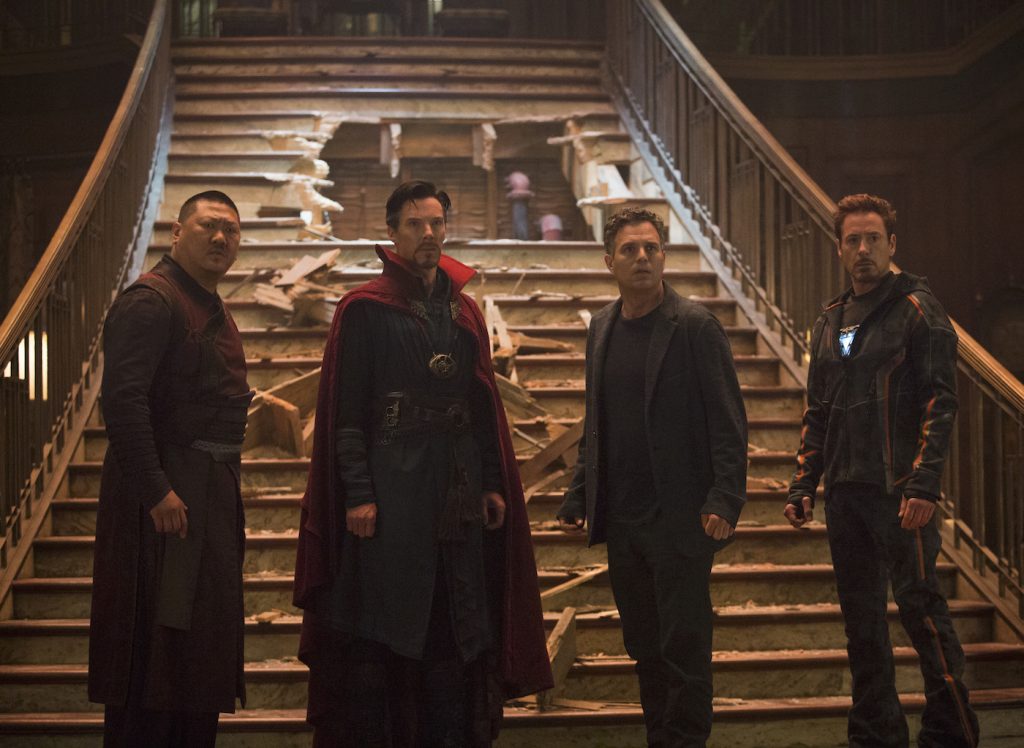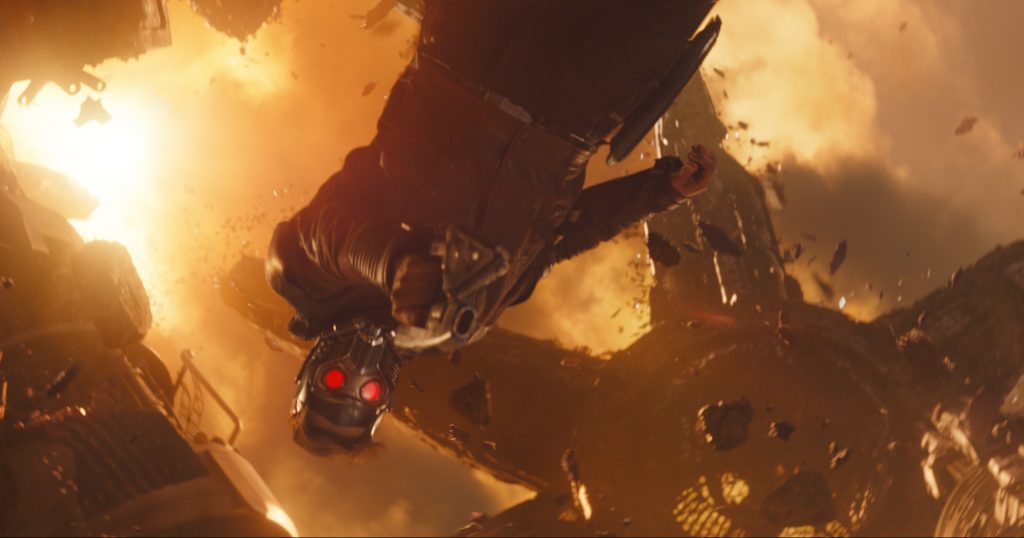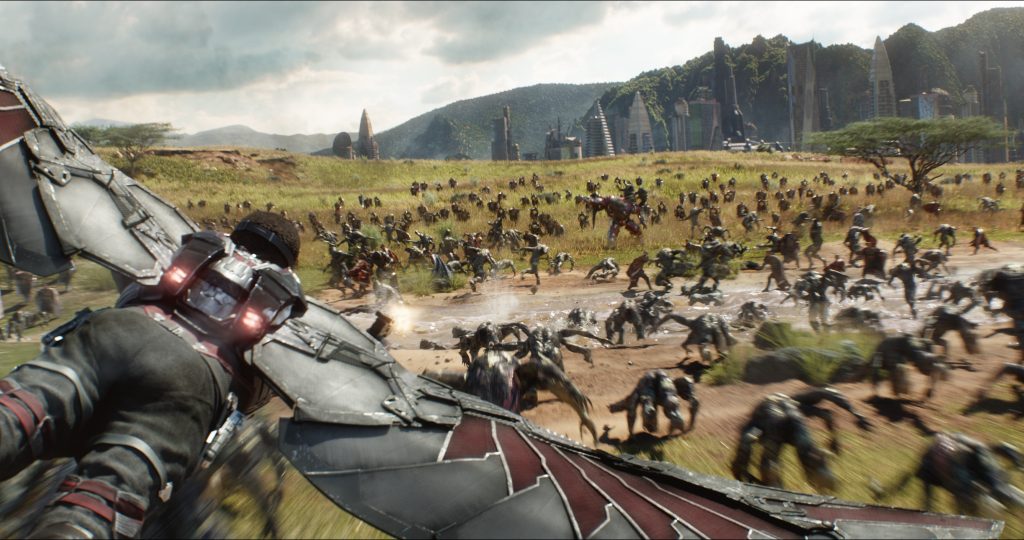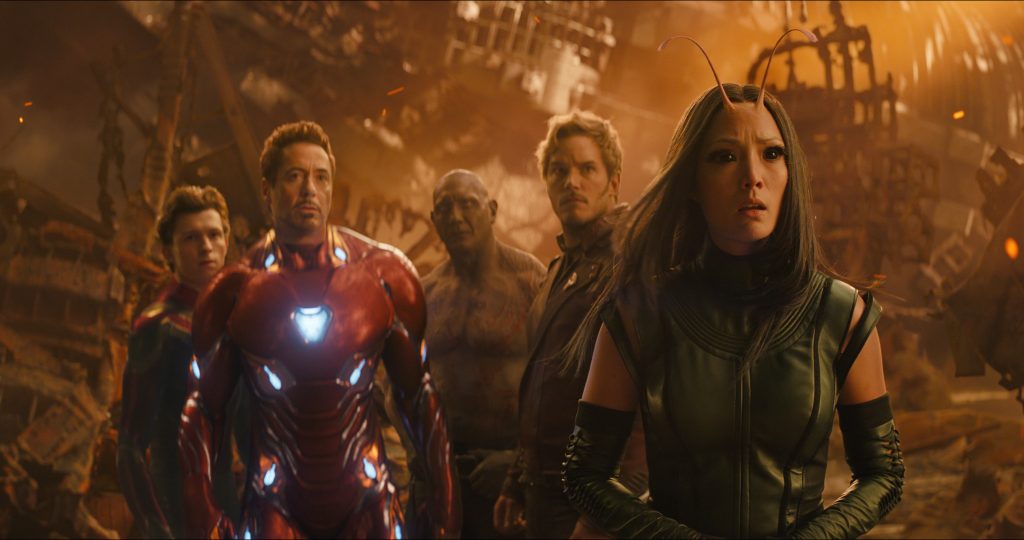Avengers: Infinity War‘s Production Designer on Helping Build the Film’s Heartbreaking Drama
By now, audiences have gotten to know the newly complex Marvel villain Thanos (Josh Brolin), thwarter of the Avengers, the Guardians of the Galaxy, and Wakandans, the soulful psychopath who has haunted the Marvel Cinematic Universe practically from its inception. The third film in Disney’s Avengers franchise (and the 19th in the MCU), Avengers: Infinity War, is setting both box office records and (spoiler alert) records for how many beloved main characters can be killed off — at least seemingly so — in one 2.5 hour stretch. Moreover, by throwing in everyone they’ve got against the Mad Titan, the movie’s kinetic drama takes place across an array of locations, from a love-nest in Scotland shot on location, to the King of the Dwarves’s weapons forge, to Wakanda, created both in practical and virtual sets. We chatted with production designer Charles Wood, who has been helping create Marvel’s world since 2013’s Thor: The Dark World, about overlap between different titles, using practical sets to create virtual worlds, and just what — if anything — can be concretely gleaned from that final scene.
When you approach a film like Avengers, how do you start to break down what will be filmed on practical sets, and what will be primarily virtual?
Well, you always start with the concept work. I suppose there are three parts to the answer. For some places, it’s an obvious answer, once you read the script. Take something like Dr. Strange’s world, certainly the Sanctum Sanctorum, it’s pretty self-evident that environment would be stage-built. As soon as you start to feel a virtual portion to it, or there’s something inexplicable that happens there, or something with great depth, something that has a visual effects component to it, typically in these films we end up building a lot of scenery, and then what often happens is that those environments are built virtually. It’s always better for the VFX departments to have something that exists to start the set extension from.

Is there a particular environment in the film that audiences might be surprised to realize has a practical or stage-built component?
Yes. A lot of the landscapes, the otherworldly landscapes were physical environments — not everything you see, but certainly what the actors would interact with. You often build parts of those landscapes, and then what happens is that the set is then LIDAR-ed, and from the LIDAR information, they grow larger landscapes. Basically you gather the digital information from a real set, to grow a world from it.
You’ve been working in the Marvel universe for some time. Is there anything that’s changed a lot since you started?
I would say the approach to any of the films has been consistent. The major development would be the change in the worlds of the visual effects and the art department. The world of VFX, the expertise of what those virtual worlds can achieve now, it’s growing all the time. So the relationship between the visual effects department and the art department has become more entwined. I suppose what we do as an art department, we are the birth of a lot of these things. So technology would be my answer. That would be the main thing that’s changing rapidly.

When you’re working on a movie like this and it visits locations seen in prior films, like Wakanda, how do you work with what already exists as well as build up your own design?
You do talk with designers from other films and from the Marvel universe. On this particular film, we created our own part of the landscape of Wakanda. We created our own unique part of that set, because it had to behave in battle sequences in a certain way. But yes, you’ve got to talk amongst yourselves and make sure you’re still in the same world.

How was working with the Russo brothers?
Absolutely brilliant. I sincerely really enjoyed working with them. They were very well-informed, and they’re also just really nice people to work with. They’re very creative and collaborative and they tick all of those boxes you’d want [directors] to tick.
When a movie like this, which is overall serious in nature, also has a lot of deliberately humorous moments, do you feel you get to reflect that in the aesthetic all?
Yes. It’s something you have to certainly be aware of, and you can articulate that in color choices, in props. We talk a lot about these sorts of environments and what’s going on in the environment, and how the feeling of that environment needs to to convey itself to audiences a lot.

Can you tell me what the final scene of the film means to you? I found it very ambiguous.
I’d be inclined to agree with you. That’s all I can really say about it, because I actually don’t know, and that’s the honest truth.
Featured image: Marvel Studios’ AVENGERS: INFINITY WAR. Thanos (Josh Brolin). Photo: Film Frame. ©Marvel Studios 2018



